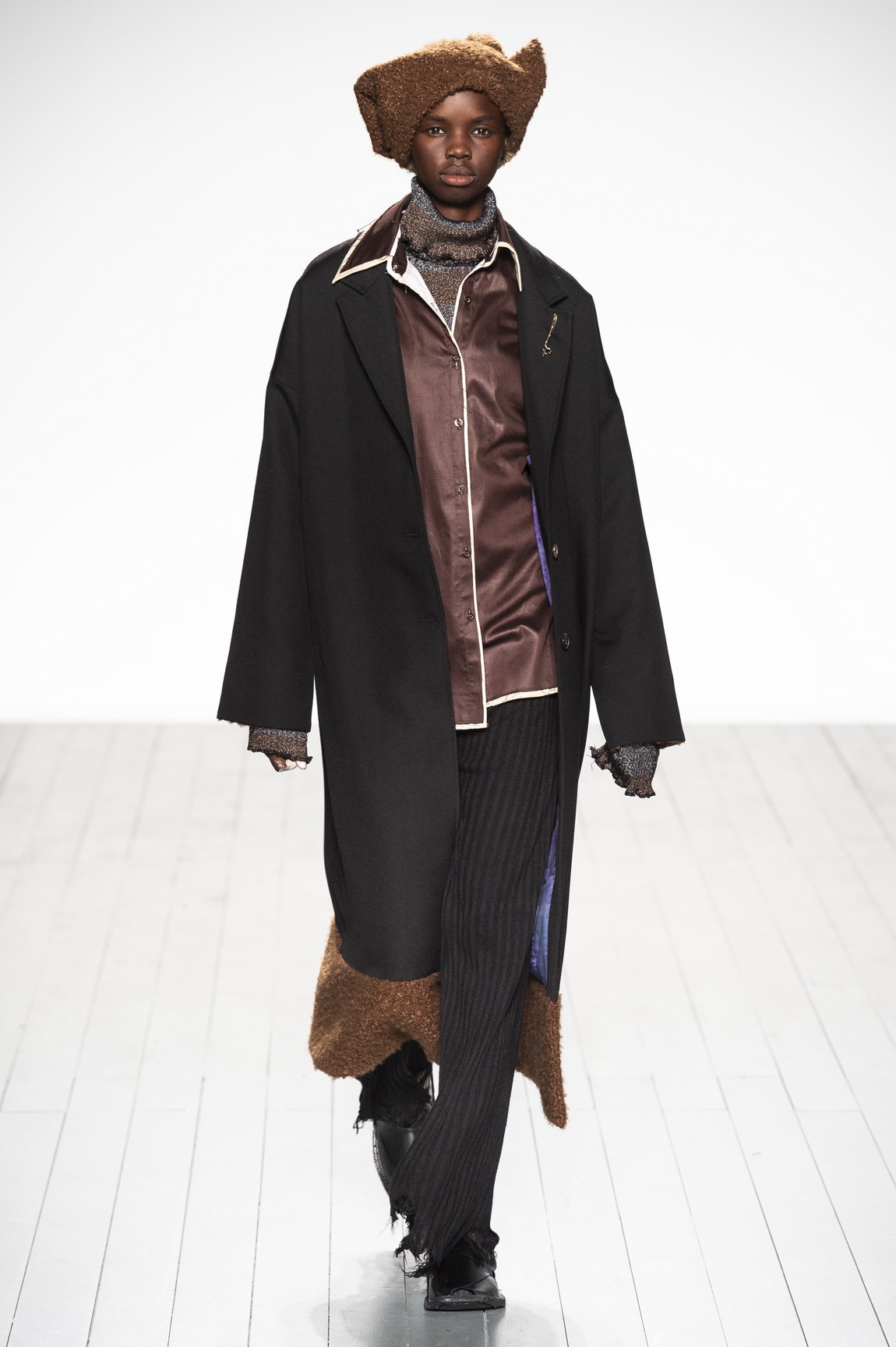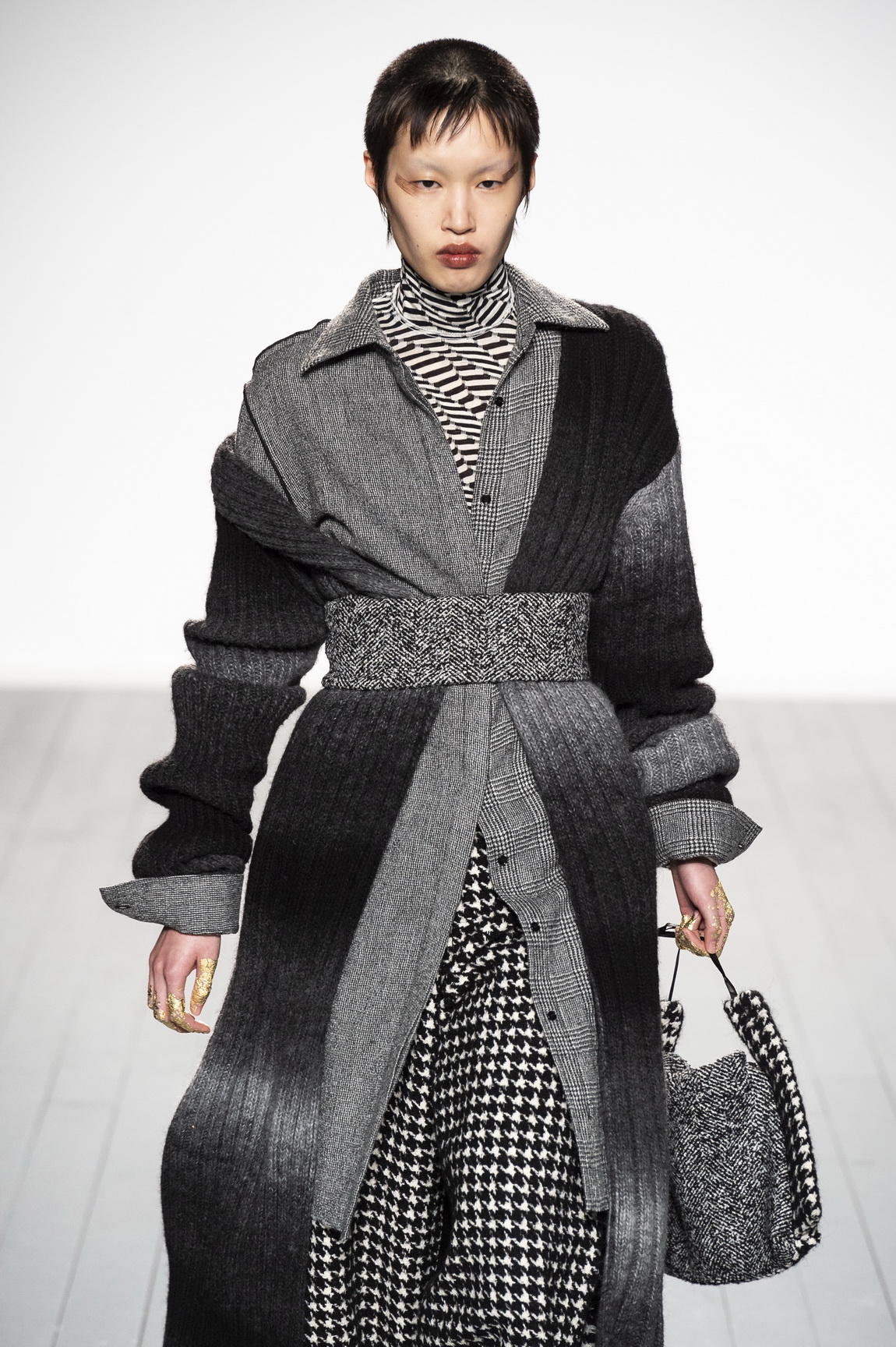For his debut solo show after graduating from Fashion East, designer A Sai Ta took his burgeoning label to the next level, eschewing the hyper-coloured club-kid amazingness that made him one of the most hyped new London designers. He could easily have kept trading on that, but A Sai wanted to push into new ground, and did so brilliantly, with muted tones, luscious, cosy wools and a focus on his supreme skill in cutting really beautiful clothes. We spoke to the designer just before his show, to find out more about his new proposition.

This season marks a change in ASAI, as well as stepping out on your own, you’ve taken your designs in a different direction, where did the drive for that change come from?
I wanted to be brave. I wanted to tackle a new subject matter, something that didn’t necessarily feel or come naturally to me, and understand what my interpretation of it would be. See how it takes shape in my world. Everything in this collection feels grounded in a sense of reality, which kind of contradicts what I’ve done before — it’s always been more about fantasy. I’m trying to extend my creative vocabulary and go beyond the realms of what I thought I could do… translating a different, quieter type of energy into the clothes. I’ve been reflecting a lot about the passing of time, and growing older. You can sometimes go through a bit of a skeptical phase when you’re growing up — everything seems dull, dry, bland — before it turns into an understanding that you’ve become more grounded, and are just not phased anymore by hype. I think in a way this has seeped through into the clothes.
How do you describe this collection? It’s much more traditionally British than what we’ve seen from you before, what’s the new ASAI mood?
I’ve been discovering the work of August Sander. He photographed people in the late 19th century from different social backgrounds. It got me thinking about class and money — particularly in the UK — and how I’d been speaking about those concepts in my work so far. I feel like I’ve proposed broke girls, from poor immigrant families especially, turning around these amazing glamorous looks. In this collection there’s an inversion, where I’m trying to understand the world of privileged upper-class country women, and their approach to style. There’s kind of nowhere to hide with this work. It feels very humble in a way.
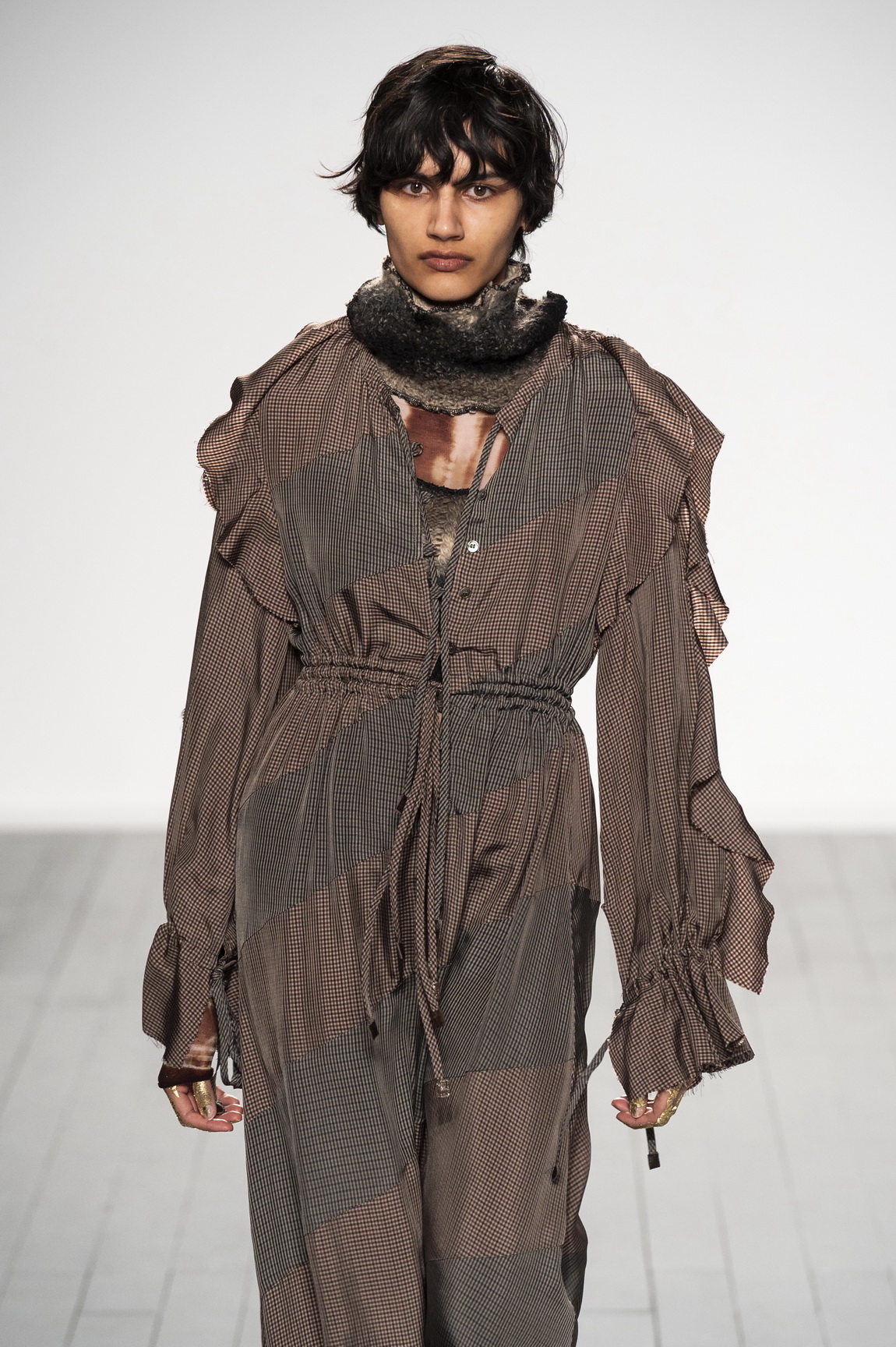
There’s this whole debate at the moment about the global elite, the top 2%, and with what’s currently going on in our country the future is starting to feel like a place where people don’t want to mix anymore. What is the future going to look like… maybe like this collection? This upper class world that is so alien to me, and the complete opposite to everything I know, it’s almost like a counter-culture. It’s similar to Teddy Boys dressing in suits — taking the established look and aesthetic and trying to understand it, interpret it in a way that makes sense to you. It’s like, what does this Asian boy know about high fashion, luxury, the British country…? I come from a completely different social class and upbringing.
Why was it important for you to really focus on each piece of clothing, as well as a wider creative concept this time?
I guess it’s me exploring my love for clothes more. Kind of developing a profound understanding of a ‘wardrobe’, and the more commercial side of things.
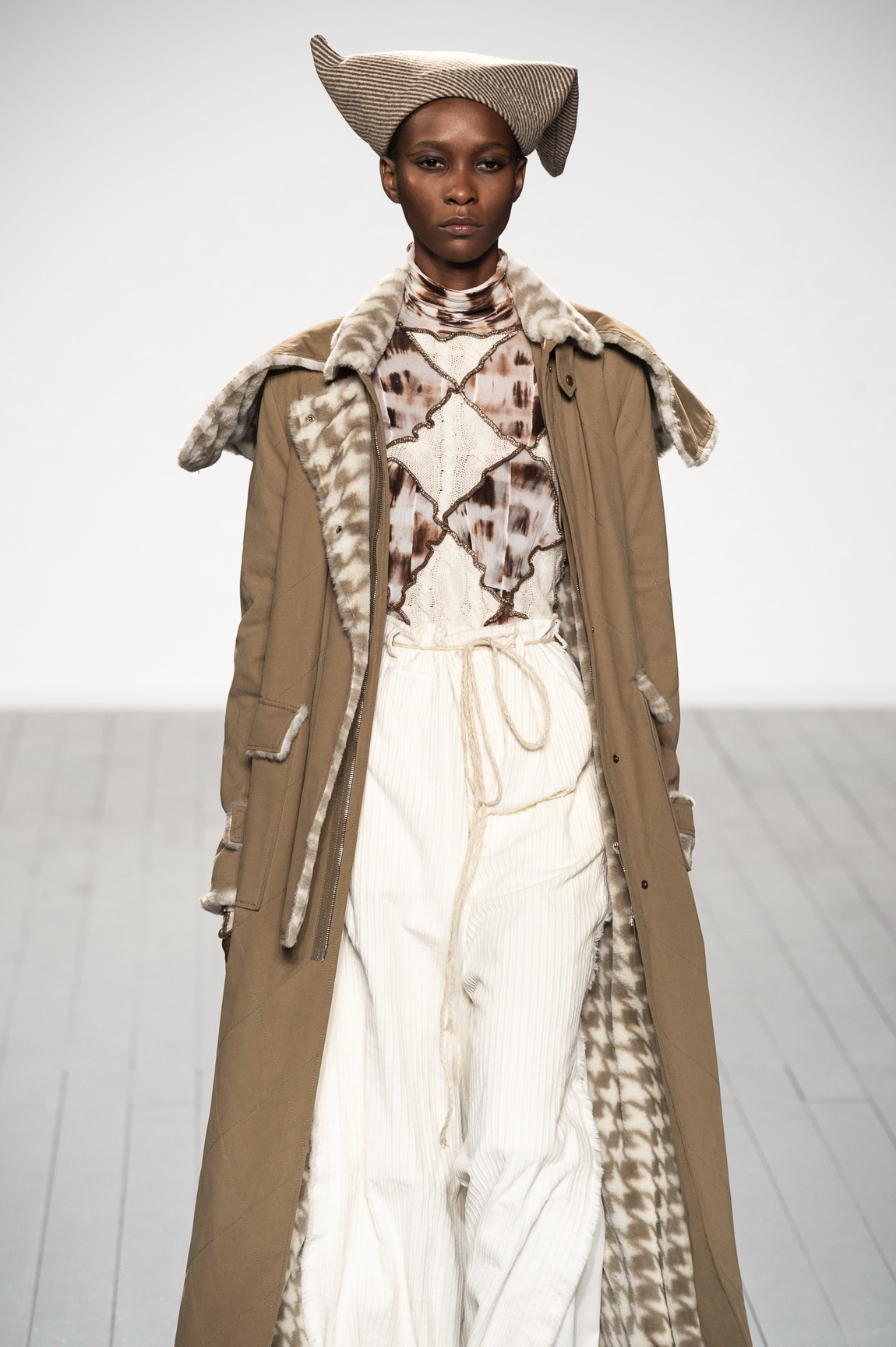
You’ve riffed on your heritage before, but also expressed frustration at being boxed into a particular perspective, how does that fit into this collection?
This time I’ve actually placed myself in a box on purpose… it’s a self-imposed exercise for me to grow as a designer. I don’t think I’m fully defined yet as a creative, and neither is the ASAI woman, we’re both still on a journey of self-discovery. I’ve tried not to focus on what I know I’m good at, and instead look to something different. I wanted to challenge myself to work within the confines of a different concept, and see what I could come up with. I’m asking myself, is this a wardrobe for ethnic people who are trying to understand what Britishness means to them? How does the outside world interpret what makes something British? What is assimilation, what does it look like? This isn’t something I’ve ever thought about or explored, I’ve always done the complete opposite and created a world filled with different people. I’m kind of appropriating a British concept, the countryside and its elite, but in an attempt to understand the life of this aristocratic woman.
There’s so much ethnic dress in London. With this collection I guess I’m asking myself and everyone, what would London look like with this continued rise of the elite, when we’re all separated from each other and there’s no more leaking of cultures. You’ve got this scenario where ethnic girls are trying to assimilate, or else they’re being told they’re not British enough and on the other side, these British girls in the traditional sense questioning their roots.
I wanted to restrict myself so I wouldn’t go all over the place, which is what you do sometimes when you’re tackling the unknown. I guess the best example I can give is the colour palette; apart from a few looks there’s almost no colour this time. Keeping things tight feels like probably the best way to stand your ground, which I feel is more important than ever now.
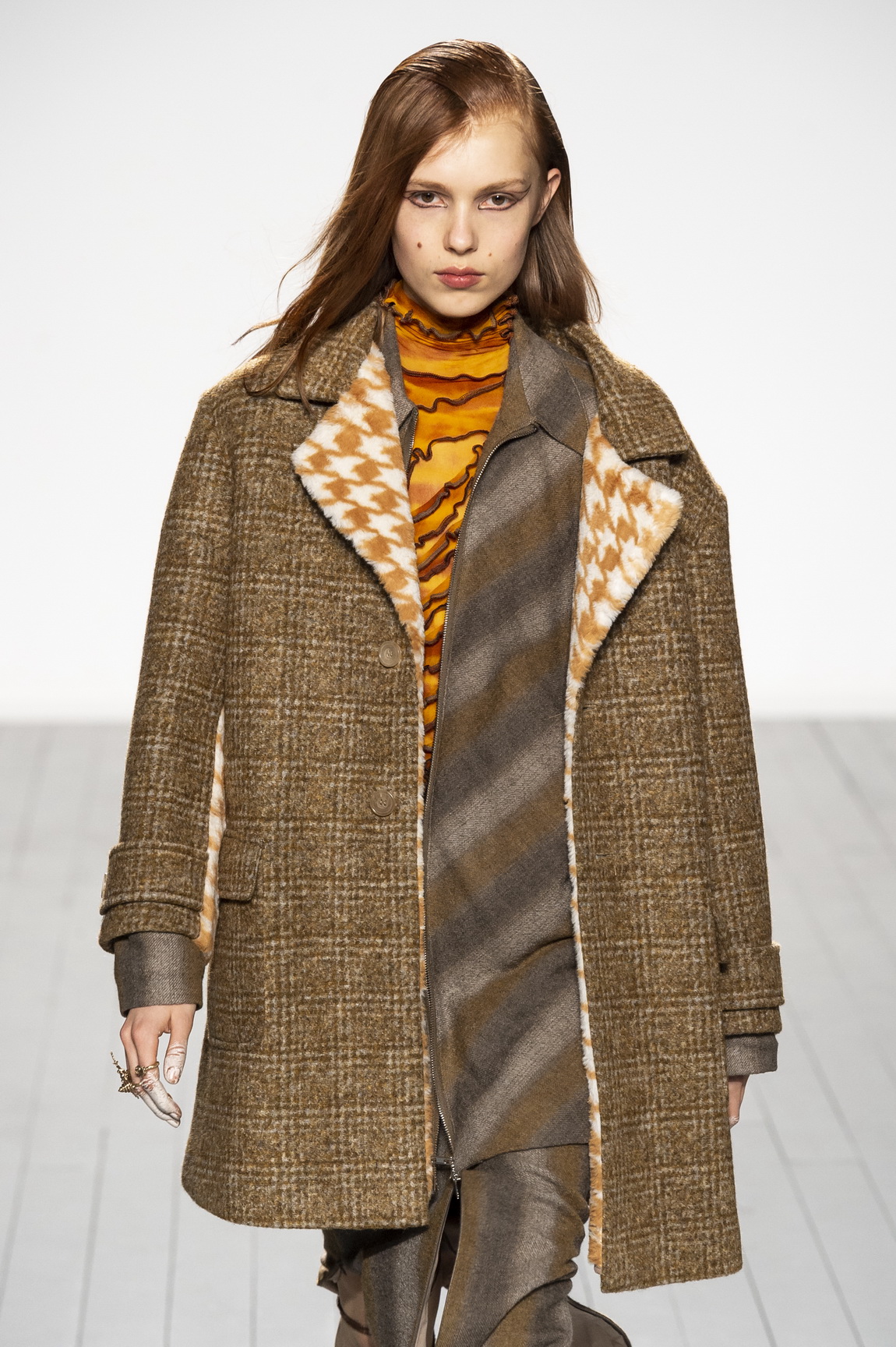
Tell us about the prints and fabrics you’ve used this time…
It’s kind of ironic… this collection is about Britishness, but the fabrics are all from Japan. Even the fabrics themselves are part of the debate about people being challenged on what being British means. I think it’s also about the general trend of people in the fashion industry pressuring themselves into being something they’re not, because in the end most of them just want to assimilate as well. My thinking was about subverting the use of each of the fabrics. I approached it the same way that I did the whole collection — sticking with specific fabrics and seeing what I could get out of them. It’s about taking something soft and then making it into something more structural, and doing the same thing the other way around. Soft wools are bonded onto neoprene for example to toughen them up, make them strong and more stable. Comfort is really important, so there’s also padding in the collection.
What do you want people to take away from your show tomorrow, what kind of reaction are you hoping for?
Escape. I’m hoping the clothes will make people want to get lost in the country, escape to the woods and hug a tree. Hopefully they’ll also feel a quiet resilience. I want people to feel strength, the way I did with this collection — I feel like it shows the strength I’ve got to take on something new, and push through with conviction. It’s all new to me but doesn’t feel fake, in fact it feels pretty real. Some of my close friends who have seen the collection already actually feel it’s more ‘me’ than my previous work. In the end, yes my heritage is Chinese and Vietnamese… but I’m also British. And that’s a fundamental part of my identity.

